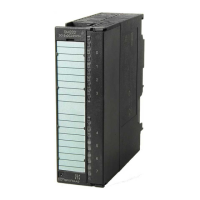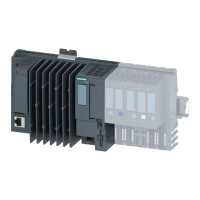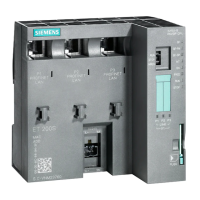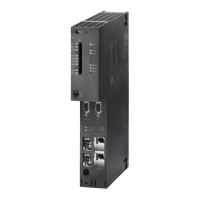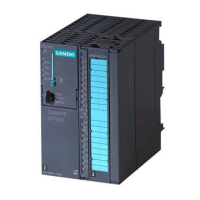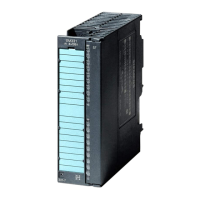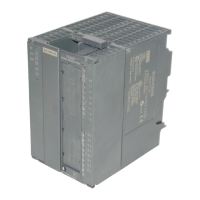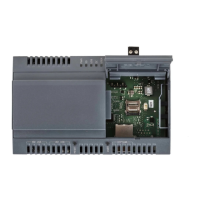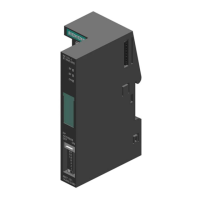Cycle and response times
7.2 Cycle time
Sequence of cyclic program processing
The table and figure below show the phases in cyclic program processing.
Table 7-1 Cyclic program processing
Step Operational sequence
1 The operating system initiates cycle time monitoring.
2 The CPU copies the values of the process image of outputs to the output modules.
3 The CPU reads the status at the inputs of the input modules and then updates the
process image of inputs.
4 The CPU processes the user program in time shares and executes program instructions.
5 At the end of a cycle, the operating system executes pending tasks, such as the loading
and clearing of blocks.
6 The CPU then returns to the start of the cycle, and restarts cycle time monitoring.
3,2
3,,
6&&%H6\
8VHU3URJUDP
7LPHVOLFHVHYHU\PV
7LPHVOLFHVPV
&RPPXQLFDWLRQ
8VHU3URJUDP
2SHUDWLQJV\VWHP
&\FOHWLPH
Figure 7-1 Time-Sharing Model
PIO: Process image of outputs
PII: Process image of inputs
SCC: Scan cycle check point
BeSy Operating system
In contrast to S7-400 CPUs (and the CPU 318-2 DP), the S7-300 CPUs data only allow data
access from an OP / TD (monitor and modify functions) at the scan cycle check point (Data
consistency, see the Technical Specifications). Processing of the user program is not
interrupted by the monitor and modify functions.
S7-300 CPU Data: CPU 315T-2 DP
Manual, 12/2005, A5E00427933-02
7-3

